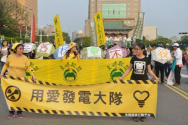It is like @FairAndUnbiased said, older machines are typically cheaper, and you can project more area in one step so you get more areal output per unit of time.If you wanted to make 5nm, 65nm and 130nm chips would it not be cheaper to buy the asml 2050i and use for all of these rather than buying 3 machines?
Wow. Just amazing. To put this under perspective.The plant currently has nine production lines for 8-inch wafers and two high-tech production lines for 12-inch wafers, with a total yearly production capacity of 2.4 million 300 mm wafers, 5.4 million 200 mm wafers and 4.8 million 150 mm wafers. FerroTec Hangzhou Semiconductor Wafer Co., Ltd strives to be one of the world's leading suppliers of semiconductor wafers, and realize the true nature of "smart manufacturing in China" in the semiconductor silicon material industry.
"Global demand for 12-inch silicon wafers in 2018 was about 5.86 million pieces/month, of which 1.5 million pieces/month for logic chips, 1.4 million pieces/month for DRAM, and 1.8 million pieces/month for NAND, including NORFlash, CIS and others are 1.2 million pieces/month; 8-inch silicon wafers require 5.54 million pieces/month, which is converted to 12-inch wafers by the area of about 2.45 million pieces/month."
So that is over 8% of global demand for 2018 in one plant.

